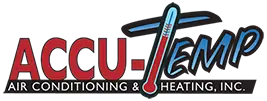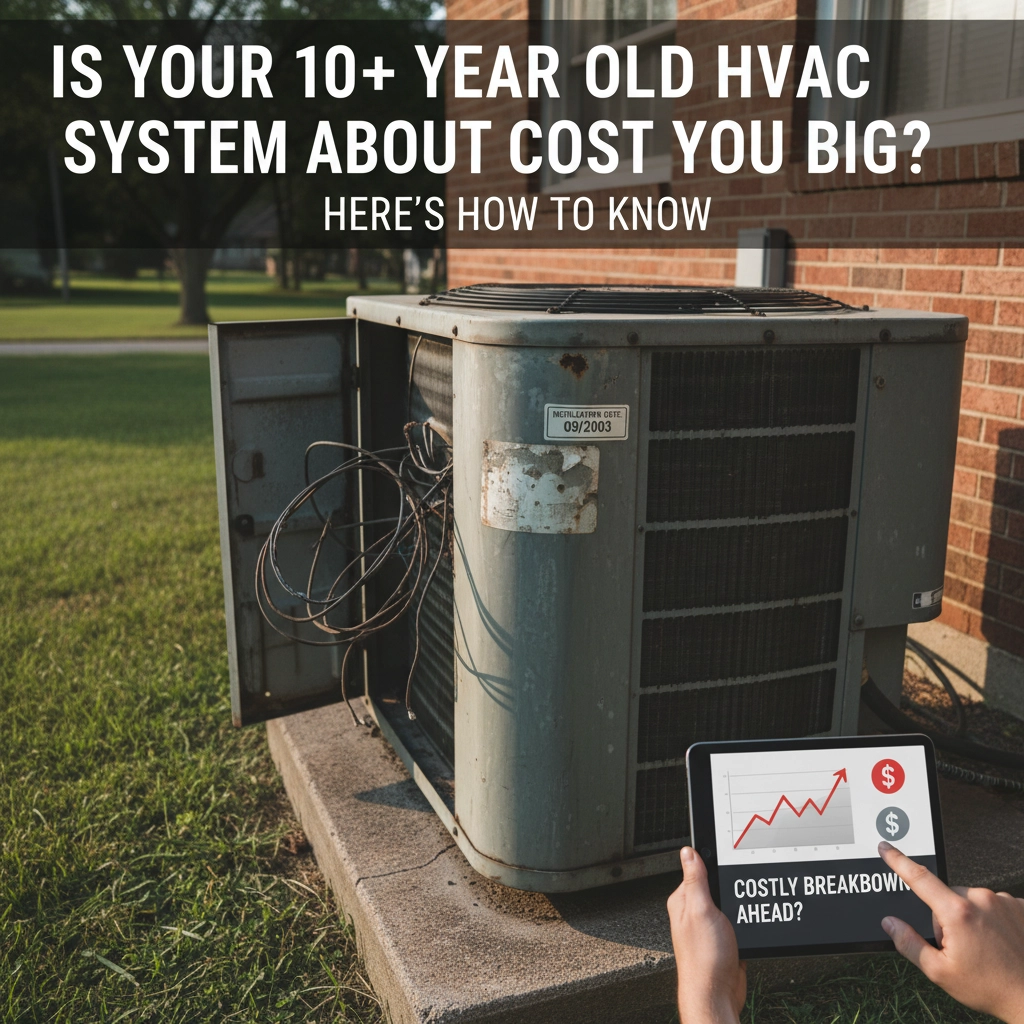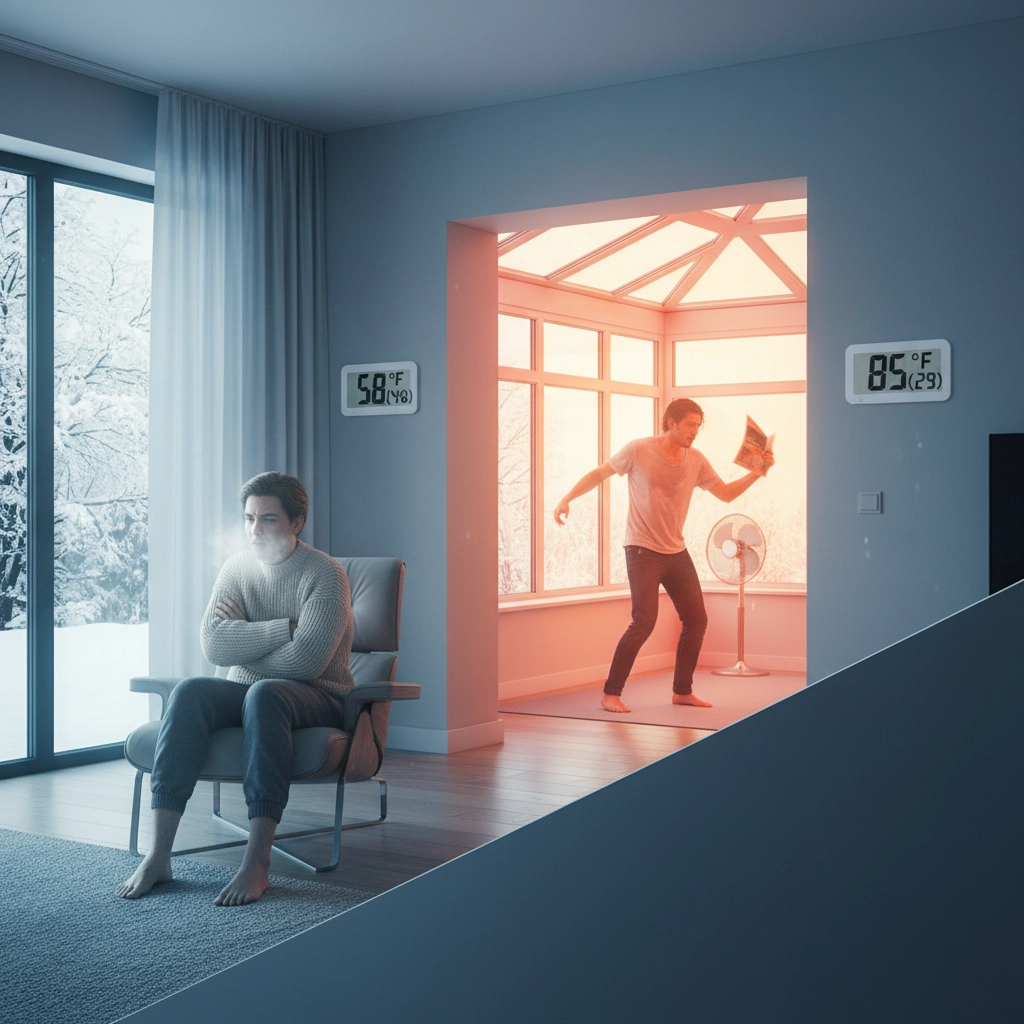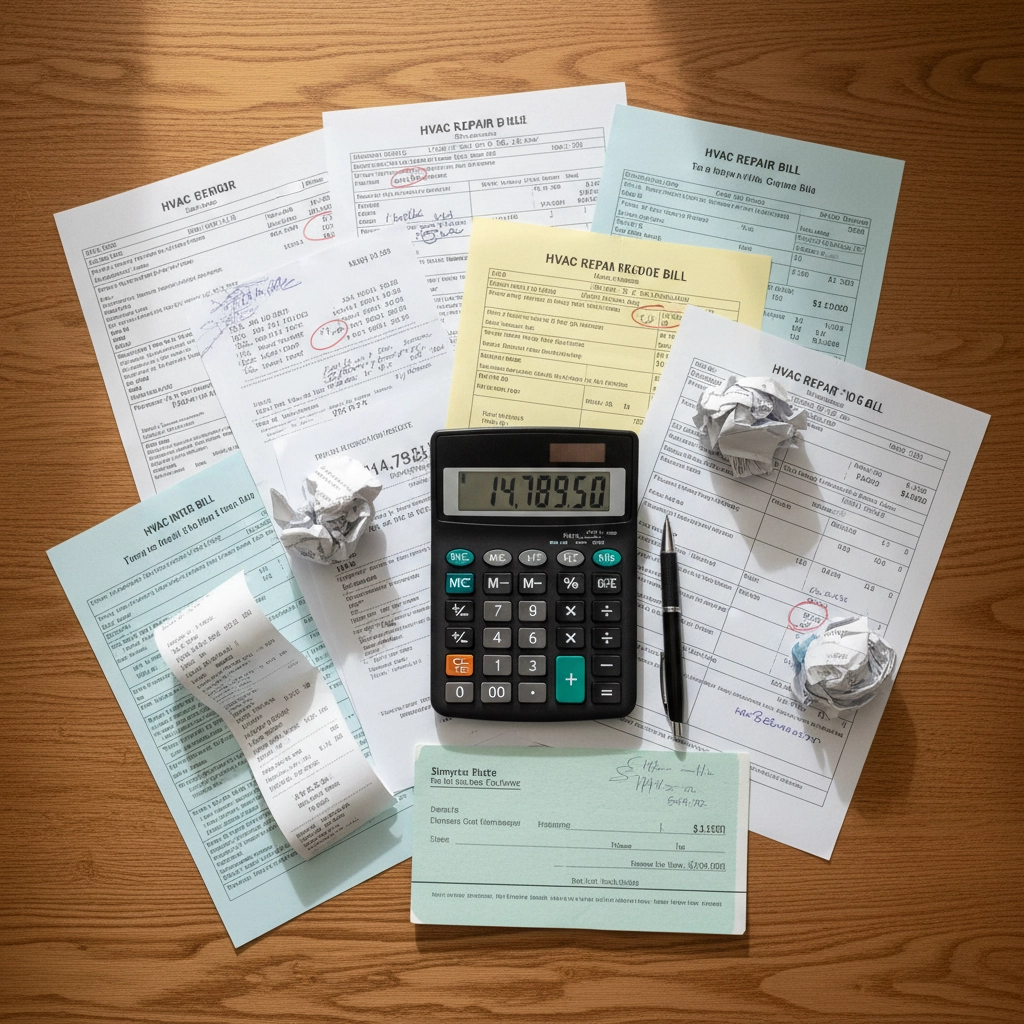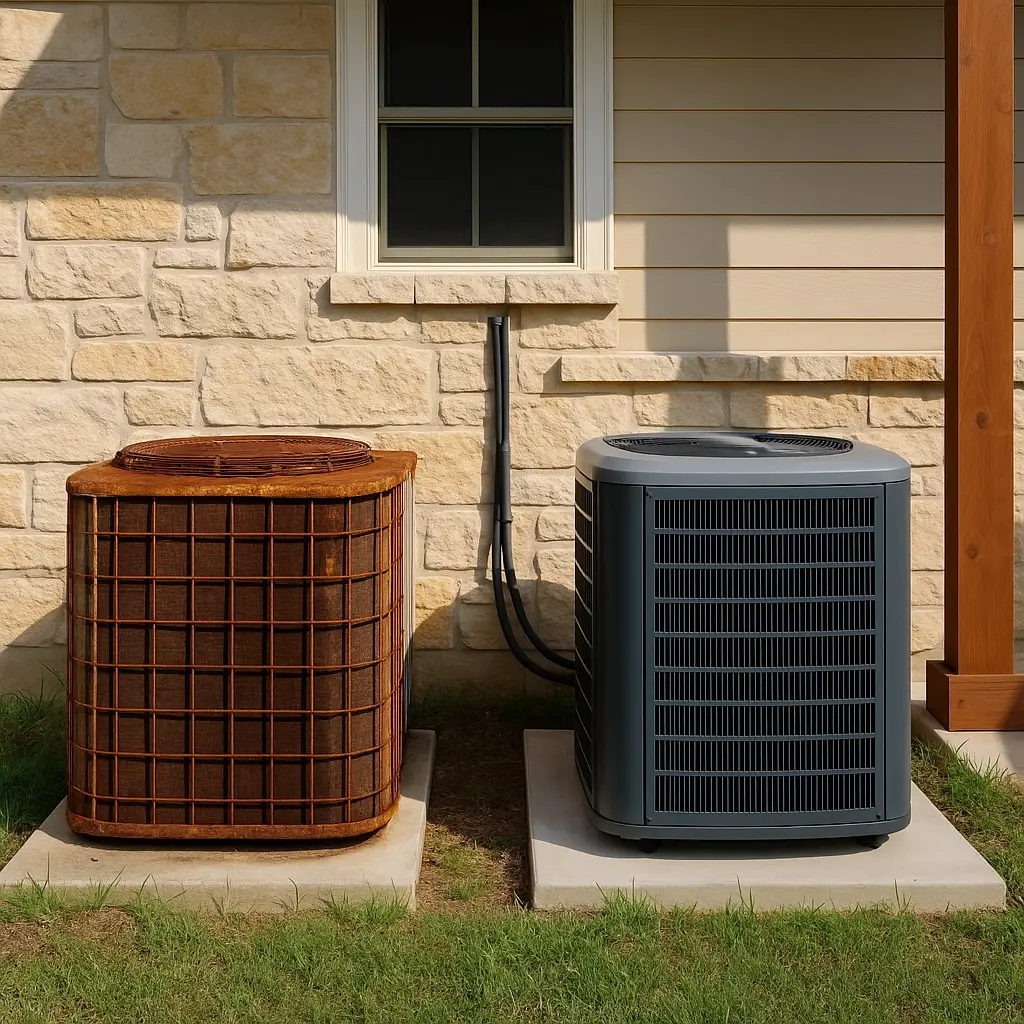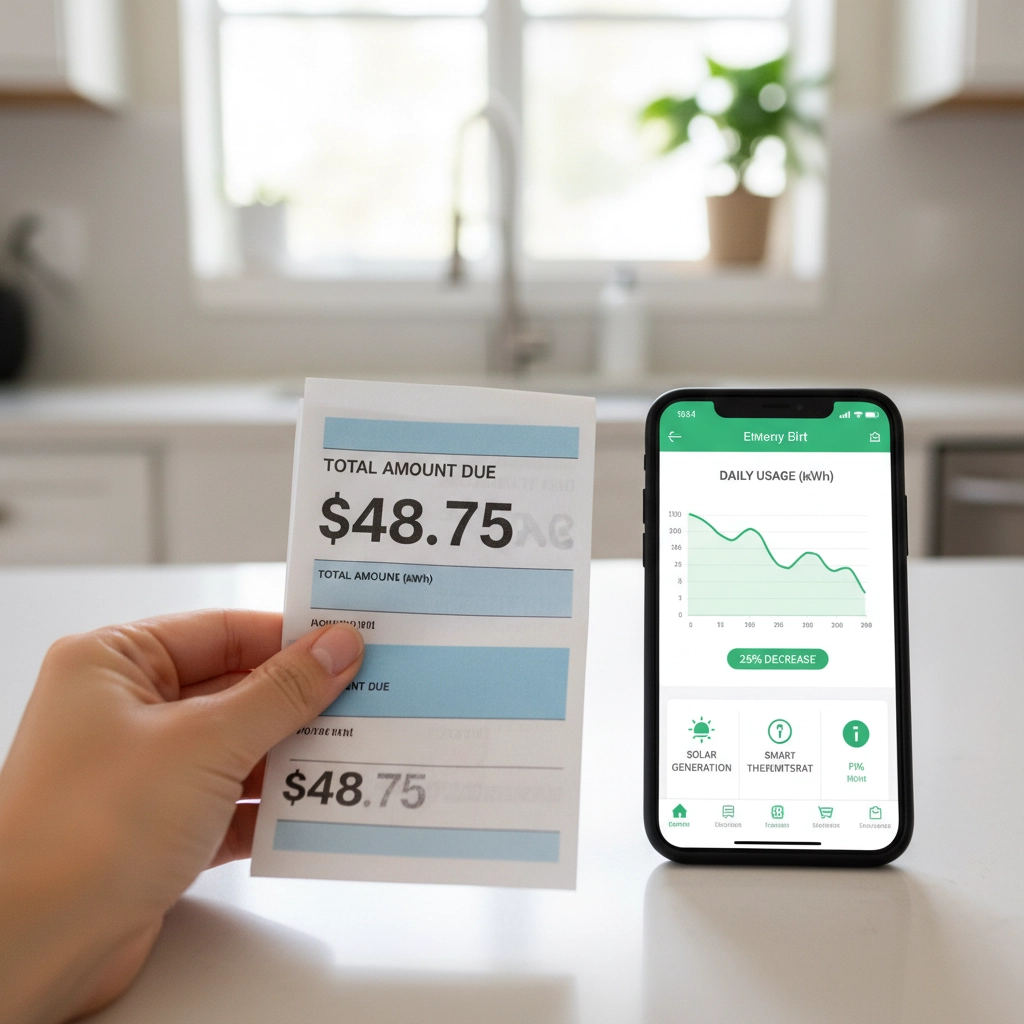Is Your 10+ Year Old HVAC System About to Cost You Big? Here’s How to Know
Here’s the reality about your 10+ year old HVAC system: you’re sitting at the edge of what we call the “decision zone.” Your system has served you well, but it’s entered the phase where small problems can quickly turn into big expenses – and in Central Texas heat, that’s not a gamble you want to take.
The good news? There are clear warning signs that tell you whether you’re looking at minor maintenance or major money. Let me walk you through exactly what to watch for and how to make the smartest decision for your wallet and comfort.
The Tell-Tale Signs Your System is Struggling
Your Electric Bills Keep Climbing
This is usually the first red flag homeowners notice. If your energy bills have been steadily increasing over the past year or two, even though you haven’t changed your thermostat habits, your aging system is working overtime just to keep up.
I had a customer in South Austin whose monthly electric bill jumped from $180 to $280 over two summers. When we inspected her 12-year-old system, the compressor was struggling, the coils were dirty, and the ductwork had developed several leaks. The system was running almost constantly just to maintain 75 degrees.
Hot and Cold Spots Throughout Your Home
Walk through your house right now. Are some rooms noticeably warmer or cooler than others? This uneven cooling often means your system can’t distribute air effectively anymore. Common culprits include failing blower motors, clogged ducts, or refrigerant leaks.
More Frequent Breakdowns
Here’s a pattern I see all the time: Year 8-10, you might need one repair. Year 11-12, suddenly it’s two or three service calls. By year 13-15, you’re on a first-name basis with your HVAC tech. Each breakdown might seem minor individually, but they add up fast.
Strange Noises and Cycling Issues
Your system shouldn’t sound like a freight train. Grinding, squealing, or banging noises indicate internal components wearing out. Similarly, if your system is constantly turning on and off (short cycling) or running non-stop, something’s wrong.
Poor Air Quality
Older systems often struggle to filter air effectively. If you’re noticing more dust, stuffiness, or allergy symptoms indoors, your aging HVAC might not be doing its job anymore.
The Real Cost of Keeping an Old System
Let’s talk numbers because this is where things get interesting. The average Central Texas homeowner spends about $400-800 annually on repairs for systems over 10 years old. But here’s what really hurts: the efficiency loss.
A 10-year-old system that was originally 13 SEER might now be operating closer to 10 SEER due to wear and refrigerant leaks. In Texas, that efficiency drop can cost you an extra $600-1,200 per year in electricity – money that could be going toward a new system instead.
Common Repair Costs for 10+ Year Systems:
- Compressor replacement: $2,500-4,000
- Evaporator coil: $1,500-3,000
- Condenser fan motor: $600-1,200
- Refrigerant leak repair: $500-2,000
- Blower motor: $800-1,500
The problem with these repairs? You’re putting expensive parts into an aging system. It’s like putting a new engine in a car with 200,000 miles – technically possible, but probably not wise.
The $5,000 Rule: Your Decision-Making Tool
Here’s a simple formula that’s saved countless homeowners from throwing good money after bad. Take your system’s age, multiply by $100, then add your current repair estimate. If the total exceeds $5,000, replacement usually makes more sense.
Examples:
- 12-year system + $1,800 repair = $3,000 (probably repair)
- 14-year system + $2,200 repair = $3,600 (getting close to replacement territory)
- 15-year system + $1,500 repair = $3,000 (but consider the age factor)
But this rule isn’t perfect. In our Texas climate, systems work harder and wear out faster than the national average, so I often recommend being more aggressive about replacement once you hit that 12-15 year mark.
What Replacement Actually Costs (And Why It’s Worth It)
I won’t sugarcoat it – a new HVAC system is a significant investment. In Central Texas, you’re looking at:
- Basic replacement: $8,000-12,000
- Mid-range system: $12,000-16,000
- High-efficiency with upgrades: $16,000-22,000
Before you panic, consider what you get for that investment:
Immediate Benefits:
- 30-40% reduction in energy bills
- Consistent temperatures throughout your home
- Improved air quality
- Quiet operation
- Manufacturer warranty (typically 10 years on parts)
Long-term Value:
- Avoid the stress of unexpected breakdowns during Austin’s brutal summer heat
- Increased home value (new HVAC systems add $3,000-8,000 to home value)
- Federal tax credits up to $2,000
- Austin Energy rebates up to $1,200
One of my customers in Cedar Park replaced their 14-year-old system last spring. Their previous August electric bill was $310. This August? $185. That $125 monthly savings means their new system will pay for itself in about 8 years – and they’ve got 10+ years of worry-free operation ahead.
Making the Smart Choice for Your Situation
Not every 10+ year old system needs immediate replacement. Here’s how to evaluate your specific situation:
Consider Replacement If:
- Your system is 12+ years old AND having frequent issues
- Annual repair costs exceed $1,000
- Your energy bills have increased significantly
- You’re planning to stay in your home 5+ more years
- You’re dealing with comfort issues despite repairs
Stick with Repairs If:
- Your system is well-maintained and working efficiently
- This is the first major repair needed
- You’re planning to move within 2-3 years
- The repair addresses a specific issue and restores full function
The Gray Area (10-12 years):
This is where professional assessment becomes crucial. A thorough inspection can reveal whether your system has several good years left or if it’s living on borrowed time.
Take Action Before Summer Hits
The worst time to discover your system is failing? July in Texas when it’s 105 degrees and everyone needs HVAC service. If you’re seeing warning signs now, address them before peak season.
Your Next Steps:
- Schedule a thorough system inspection
- Get repair estimates for current issues
- Apply the $5,000 rule to your situation
- If replacement makes sense, get quotes for multiple options
- Research available rebates and tax credits
The Bottom Line
Your 10+ year old HVAC system isn’t automatically doomed, but it’s definitely entering the phase where smart planning beats reactive repairs. Pay attention to the warning signs, crunch the numbers honestly, and make decisions based on your long-term comfort and financial well-being.
Remember, in Central Texas, your HVAC system isn’t just about comfort – it’s about survival during our intense summers. Investing in reliable cooling isn’t just smart; it’s essential.
If you’re seeing multiple warning signs or just want an honest assessment of your system’s remaining life, get in touch with our team. We’ll give you straight answers about whether repair or replacement makes the most sense for your specific situation – no sales pressure, just honest guidance from folks who understand Texas weather.
Your future self will thank you for making the smart choice now, whether that’s strategic repairs or investing in a new system that’ll keep you comfortable for the next 15-20 years.
